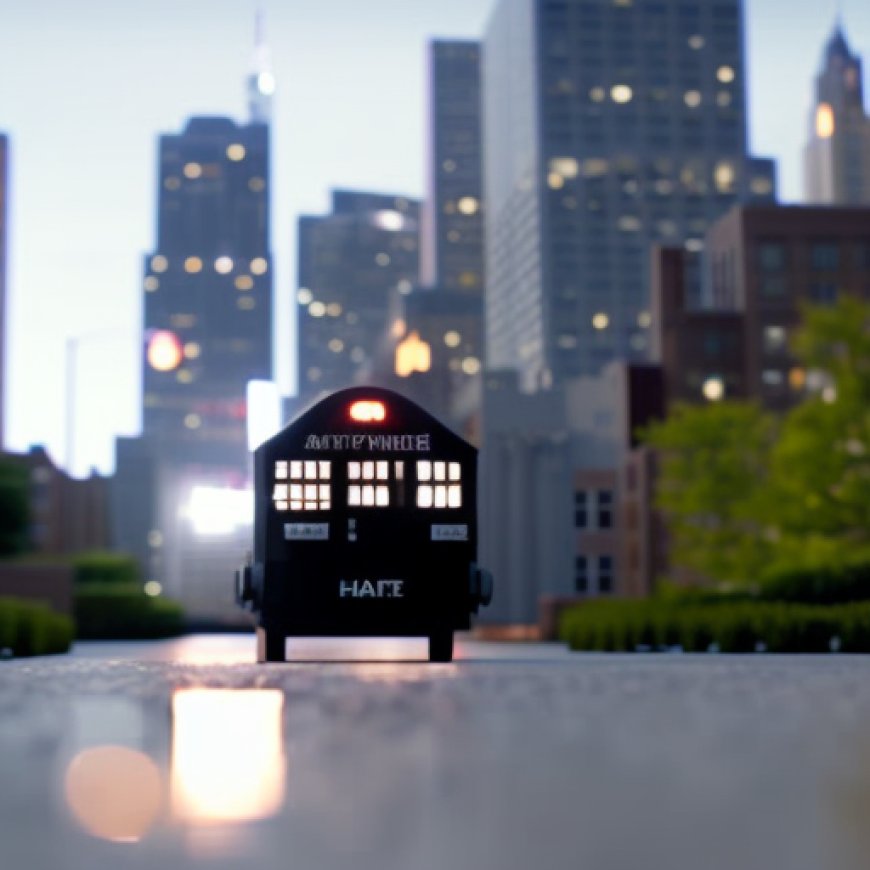I moved to a white, affluent U.S city. Then the hate crime happened
I Moved to a White, Affluent U.S City. Then the Hate Crime Happened Newsweek


I was born in the South but raised in Cleveland, Ohio
I was born in the South but raised in Cleveland, Ohio, during the turbulent 1970s. For those unfamiliar with the city, race relations were far from harmonious back then.
Racial Segregation and Curiosity
There were streets and blocks where, as a person of color, you dared not venture without risking your life. The racial segregation was stark, with schools and neighborhoods divided along color lines.
In the first grade, I was bused to a predominantly white school an hour away from my home. I remember my mom waking me up at 6:00 a.m., standing at the bus stop in the dark, cold morning, waiting for the bus to whisk me away.
The school was primarily white, but the kids on my bus were mostly black, although they weren’t affluent. It seemed the welcome mat wasn’t out for us, and while the teachers and faculty were nice, many of the kids wanted nothing to do with us.
My mother dressed me in my finest clothes, and I excelled academically, but I couldn’t fathom why I had to wake up two hours earlier to go to a school that wasn’t all that different from the one just two streets away from our house.
Every day after school, I’d run to the library on my street, asking the librarians to show me books about slavery, segregation, and stories that delved into America’s racial relations. My response wasn’t anger—it was curiosity, an insatiable desire to understand our shared history and why people harbored prejudice against those who looked different from them.
Moving to Euclid
A few years later, my mother remarried, and we moved to Euclid, which at the time, was an affluent, all-white suburban neighborhood in Cleveland. This move felt like my own version of the “Movin’ On Up” ideology made famous by The Jeffersons TV show. However, the start was far from smooth.

Love Hudson-Maggio (L & R) is an author, and CEO of a marketing technology firm.
Love Hudson-Maggio
Our first night in our new house ended with an alarming discovery. I waved goodbye to the moving van from my bedroom window, which faced a lovely street with a charming cul-de-sac. I was excited about riding my bike up and down the street and making new friends in preparation for my first day of sixth grade the following morning.
When my mother entered my room, she
SDGs, Targets, and Indicators
1. Which SDGs are addressed or connected to the issues highlighted in the article?
- SDG 10: Reduced Inequalities
- SDG 16: Peace, Justice, and Strong Institutions
The article discusses racial segregation, discrimination, and hate crimes, which are issues related to inequality and social justice.
2. What specific targets under those SDGs can be identified based on the article’s content?
- SDG 10.2: By 2030, empower and promote the social, economic, and political inclusion of all, irrespective of age, sex, disability, race, ethnicity, origin, religion or economic or other status.
- SDG 16.1: Significantly reduce all forms of violence and related death rates everywhere.
The article highlights the need for social inclusion and the reduction of violence and hate crimes.
3. Are there any indicators mentioned or implied in the article that can be used to measure progress towards the identified targets?
- Indicator for SDG 10.2: Proportion of people who feel safe walking alone around the area they live.
- Indicator for SDG 16.1: Number of victims of intentional homicide per 100,000 population, by sex and age.
The article mentions hate crimes, burning crosses, and pipe bombs as forms of violence and intimidation. These incidents can be used as indicators to measure progress towards reducing violence and ensuring social inclusion.
Table: SDGs, Targets, and Indicators
| SDGs | Targets | Indicators |
|---|---|---|
| SDG 10: Reduced Inequalities | SDG 10.2: By 2030, empower and promote the social, economic, and political inclusion of all, irrespective of age, sex, disability, race, ethnicity, origin, religion or economic or other status. | Proportion of people who feel safe walking alone around the area they live. |
| SDG 16: Peace, Justice, and Strong Institutions | SDG 16.1: Significantly reduce all forms of violence and related death rates everywhere. | Number of victims of intentional homicide per 100,000 population, by sex and age. |
Copyright: Dive into this article, curated with care by SDG Investors Inc. Our advanced AI technology searches through vast amounts of data to spotlight how we are all moving forward with the Sustainable Development Goals. While we own the rights to this content, we invite you to share it to help spread knowledge and spark action on the SDGs.
Fuente: newsweek.com

Join us, as fellow seekers of change, on a transformative journey at https://sdgtalks.ai/welcome, where you can become a member and actively contribute to shaping a brighter future.







